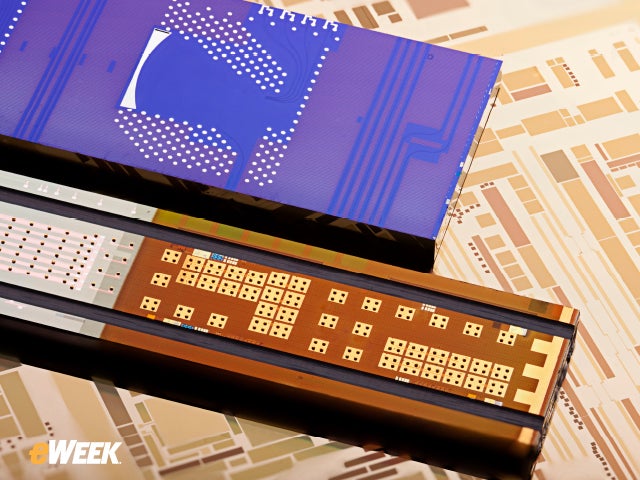eWEEK content and product recommendations are editorially independent. We may make money when you click on links to our partners. Learn More.
250G-bps Silicon Photonics Module
3Moving Data
The 50G-bps silicon photonics transmit module, left, sends laser light from the silicon chip at the center of the green board, which then travels through optical fiber to the receiver module, right, where a second silicon chip detects the data on the laser and converts it back into an electrical signal.
4Silicon Chips
5Transmitter Chip
6Collaboration
7Optical Fiber Connection
An optical fiber connection is held up to the transmit module. The 50G-bps silicon photonics link uses passive alignment techniques, wherein the connector mates to pins embedded in the silicon chip to ensure alignment of the laser beam to the optical fiber.






